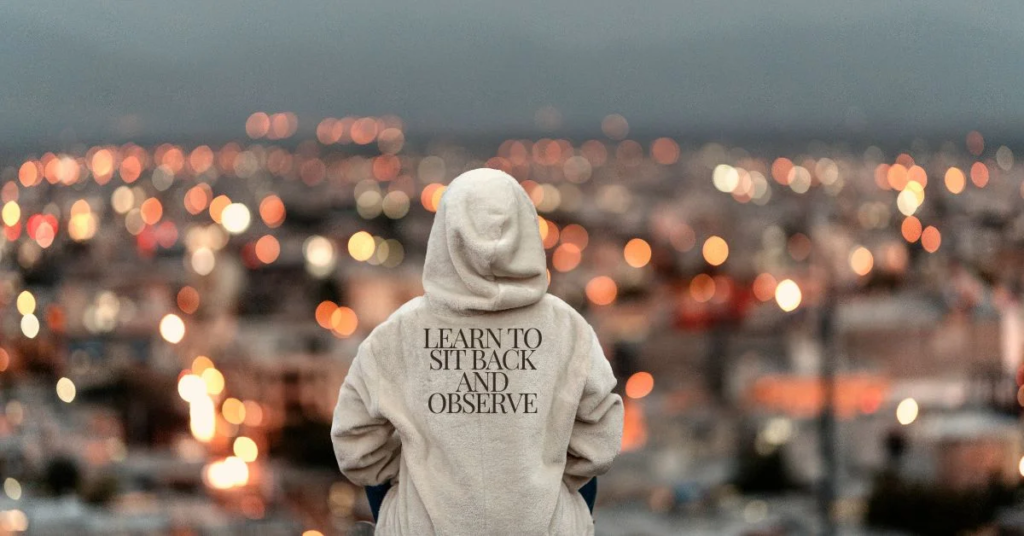In a fast-paced world, we’re often encouraged to act, react, and move quickly. But sometimes, the best way to gain clarity and awareness is by simply sitting back and observing. “Learn to Sit Back and Observe” is more than just a mantra—it’s a mindset and practice that can open doors to deeper understanding, mindfulness, and effective decision-making.
In this article, we’ll explore how stepping back and embracing observation can foster greater awareness in various aspects of life, from personal relationships to professional environments, and even in the way we view ourselves.
The Importance of Sitting Back and Observing
In a culture driven by urgency, taking a step back can seem counterproductive. Yet, moments of reflection and observation are crucial for growth. When we sit back, we create space for deeper insights. Observation allows us to:
- Gain perspective: Often, we are too involved in a situation to see it clearly. By stepping back, we can distance ourselves from biases and emotions.
- Understand patterns: Observing behavior or events over time reveals patterns that might otherwise go unnoticed.
- Cultivate patience: Observation teaches us patience and the value of waiting for the right moment to act.
- Encourage empathy: By observing others without immediate judgment or reaction, we learn to appreciate different viewpoints and feelings.
The Science Behind Observing and Awareness

The concept of sitting back and observing is deeply rooted in psychology and mindfulness practices. Research shows that mindfulness—paying attention to the present moment without judgment—can lead to significant improvements in mental health, focus, and emotional regulation.
In neurological terms, the practice of mindful observation activates the brain’s prefrontal cortex, which is responsible for higher-order thinking, decision-making, and impulse control. By pausing and observing, we shift our brain activity from the reactive amygdala to the more thoughtful prefrontal cortex, promoting clearer thinking and greater self-awareness.
How Sitting Back Enhances Decision-Making
Effective decision-making isn’t about reacting immediately; it’s about gathering the right information, understanding the context, and then making a well-informed choice. Here’s how sitting back and observing can lead to better decisions:
- Reduced emotional bias: When we’re too close to a situation, emotions can cloud judgment. Observation gives us the distance to assess the situation rationally.
- Broader perspective: Taking a step back allows us to consider multiple viewpoints, which leads to more holistic decision-making.
- Increased creativity: Observation fosters a quieter mind, which in turn enhances creative problem-solving by allowing us to see beyond the obvious solutions.
- Improved timing: Rushing to make decisions often leads to mistakes. By sitting back, we can wait for the right moment, ensuring our actions are both timely and effective.
Practical Ways to Practice Sitting Back and Observing
Learning to sit back and observe requires practice and mindfulness. Here are some practical strategies to incorporate this skill into your daily life:
1. Pause Before Reacting
Before reacting to any situation, take a few seconds to pause and breathe. This small delay can prevent knee-jerk reactions and gives you the time to consider your response more thoughtfully.
2. Practice Mindful Observation
Spend a few minutes each day in mindful observation. Whether it’s observing your surroundings, your thoughts, or someone else’s behavior, the practice of simply noticing without judging helps strengthen your observational skills.
3. Journal Your Observations
Writing down what you observe helps solidify the practice. It allows you to reflect on patterns, thoughts, and behaviors that you may not have noticed in the moment.
4. Embrace Silence
In conversations, sometimes the most powerful tool is silence. Instead of filling every pause with words, practice listening more and speaking less. You’ll find that you often learn more by observing what others say—and what they don’t say.
5. Be Patient
Observation requires patience. Not every situation will reveal its lessons immediately. With practice, you’ll develop the ability to see beyond the surface and recognize subtleties that were once hidden.
The Role of Observation in Personal Growth

Observation isn’t just an external practice; it’s also a path to internal growth. By learning to observe your own thoughts, behaviors, and emotions, you can develop a greater sense of self-awareness and emotional intelligence.
1. Self-Awareness
Self-awareness is the foundation of personal growth. It involves understanding your own motivations, triggers, and emotional responses. By sitting back and observing your internal reactions, you can identify patterns that may be holding you back or pushing you in a direction you don’t want to go.
2. Emotional Regulation
When you observe your emotions without immediately reacting, you gain the ability to regulate them more effectively. This is especially helpful in stressful situations where reacting impulsively can escalate problems.
3. Recognizing Opportunities for Change
Observation helps you identify areas in your life where you might need to make changes. Whether it’s a habit, a relationship, or a professional goal, taking the time to observe without judgment gives you clarity on what needs to be done.
Conclusion

In a world that pushes us to constantly act and react, the ability to sit back and observe is a powerful tool for gaining greater awareness and making better decisions. By practicing patience, mindfulness, and self-awareness, we can tap into deeper insights about ourselves and the world around us. So, the next time you find yourself in a challenging situation, remember: sometimes the best course of action is to simply observe.
FAQs About Learning to Sit Back and Observe
1. Why is it important to learn to sit back and observe?
Learning to sit back and observe helps you gain perspective, avoid emotional biases, and make more informed decisions. It encourages patience, empathy, and self-awareness, which are essential for personal and professional growth.
2. How can sitting back and observing improve relationships?
By sitting back and observing, you can better understand the emotions and perspectives of others. This leads to improved communication, empathy, and conflict resolution, ultimately strengthening your relationships.
3. Can observing help with stress management?
Yes, observation, especially mindful observation, can significantly reduce stress. By taking a step back and observing your thoughts and reactions, you can better manage your emotional responses to stressful situations.
4. Is sitting back and observing the same as being passive?
No, sitting back and observing is an active process of mindful awareness. It’s not about avoiding action but about delaying reaction until you have a clearer understanding of the situation.
5. How long does it take to see the benefits of sitting back and observing?
The benefits of sitting back and observing can be seen almost immediately in terms of reduced reactivity and better emotional regulation. However, deeper awareness and personal growth develop over time with consistent practice.
Read Next: Ezclasswork: Making Class Assignments Easy and Accessible





























































